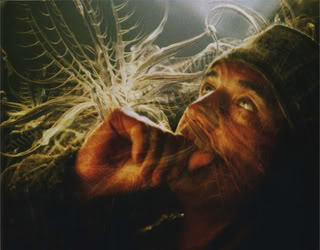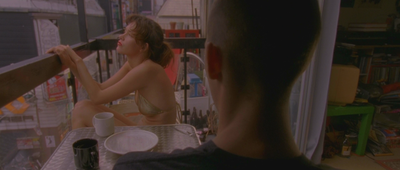Etiquetas
Article and Pictures by Evgenia Fotiou
PhD in Anthropology and Latin American Studies
Article published in the magazine
DEVELOPMENT, TOURISM AND CULTURE FROM THE PERIPHERIA
June 2008 Edition
Huaraz, Perú

When you visit Iquitos it’s nearly impossible to not hear of ayahuasca, usually with a generous dose of hyperbole. Especially in the last few years, after the first Amazonian Shamanism Conference held there in 2005, hundreds of people flood Iquitos in the summer months in search of this plant sacred to the indigenous people of the Amazon. In the last years, it has also appeared numerous times in popular media. Ayahuasca, just like all psychedelics of plant origin, is viewed with great ambivalence in the west. It is either viewed as a powerful medicine and a panacea, or as a potentially dangerous hallucinogen whose use should be at least regulated if not banned.
Iquitos is the gateway to ecotourism and most tourists do not stay in the town long, but rather visit the nearby National Reservation or one of the numerous ecotourism lodges that are located in the surrounding area. Most of these lodges offer ceremonies or retreats, the latter costing around $700-$l500 a week and some even specialize in shamanic tourism. Lodges have websites and trips can be booked over the internet even though they can be cheaper if booked locally. Tourists who speak Spanish and are on a budget seek to participate in ceremonies with independent local shamans who charge much less than a lodge.
This article is based on data collected during my 18-month fieldwork for my doctoral thesis on shamanic tourism in Iquitos. I chose to use the term shamanic tourism as opposed to the often used term drug tourism because while the latter is associated with the recreational consumption of drugs, it is hard to say this for ayahuasca since it is sought after with different motives. The unpleasantness of the experience, physical and psychological, disputes any claims for recreational use of ayahuasca as well. The people I interviewed come from all social strata and walks of life. Many travel to Iquitos specifically to take ayahuasca, while others hear about it while traveling and decide to try it. Contrary to what would be expected, many of these participants have never tried other hallucinogens. This sacramental use of ayahuasca is only embraced by a small, but increasing, part of western society and a fraction of the tourist flow in Iquitos.

Their motives vary but there are some common themes. One of them is the need to reconnect to an archaic past, a desire of continuity of consciousness from ancient times. There is also a desire to be more connected to nature and less destructive to the planet and reintroduce the sacred into their lives. Most participants seek ayahuasca ceremonies because they provide the ideal setting for personal transformation. Because this type of experience challenges preconceived notions about the world and oneself, in proper context, it can be a powerful tool for restoring both individual and group equilibrium. A vast majority of participants in shamanic ceremonies are motivated by a desire to be healed and have reported successful healing from both psychological and physical ailments. Ayahuasca is especially effective in healing issues caused by traumatic experiences as well as depression and drug addiction.

Even though these motives are legitimate and people have certainly benefited from their experiences with ayahuasca, I would like to stress the lack of context or framework for western people in making sense of the visionary experience. In indigenous cultures there is a very specific geography and structure of the other worlds the shaman visits in his/her trance, a structure that is learned during their apprenticeship. On the other hand, westerners interpret their visions in a more personal or psychological way. Some interpret them as manifestations of their subconscious mind. While traditionally shamanism was a healing force for the community, in this context it becomes about healing the individual.
Effects of shamanic tourism
The increase of western interest in shamanism and the growth of shamanic tourism have brought a great increase in the number of shamans in the city of Iquitos as well as surrounding communities. Shamanic tourism brings much needed revenue to the area of Iquitos. While a few years ago, there was little interest by young people to apprentice and become shamans, the possibility of a steady income provides great incentive. The problem is that most of them do not apprentice for a few years as it was customary and the majority tend to be inexperienced. This abundance of shamans has also created competition between them for the limited number of tourists. Some gain prestige by working with tourists, travel to the west to lead ceremonies and have achieved recognition in western ayahuasca circles.
Despite the fact that most westerners pursuing ayahuasca experiences have read about it in the abundant literature, misconceptions about shamanism abound. They believe that this form of shamanism has been practiced exactly this way for thousands of years. They overlook the historical and cultural context of shamanism, such as Amazonian cosmology, which does not fit life in the west. They also ignore the ambiguous aspects of shamanism, such as sorcery, even though it is becoming a more prominent topic of discussion. In addition, tourists have unrealistic perceptions of indigenous and local people. They romanticize them only to be disappointed in their first few days in Peru. Foreign concepts are adopted by the shamans in order to accommodate tourist expectations and needs. Notably, a shaman who I worked with would often refer to the body’s chakras, or energy centers, a concept taken from eastern spirituality.
An increasingly common phenomenon is that of the New Shamans (or as I like to call them, Gringo Shamans). These are westerners who have apprenticed with a local shaman and later create their own business, building lodges and hiring local shamans and staff. These shamans have an advantage because they can communicate better with the tourists for two reasons: language, and the fact that they can convey certain concepts more easily to them.
Criticisms
Ayahuasca tourism has been criticized for marketing native spirituality and degrading Amazonian traditions. Others believe that it can help preserve indigenous cultures, especially in the context of ecotourism managed by indigenous people (i.e. in Ecuador). The truth depends on the context and falls somewhere in between. None of the two is really true for Iquitos because we are dealing with mestizo shamans who have introduced Christian elements and marketed Ayahuasca before tourism was even in the picture. Shamanism has been a profession rather than an integral part of the community life for a long time.
Westerners see no conflict in the appropriation of indigenous knowledge. They believe that it is universal and everyone has a right to it. This is a general tendency of the New Age movement that has been heavily criticized. While New Age adopts certain elements of indigenous knowledge such as shamanism, it is rare that westerners will make the necessary sacrifices and adjustments to their lifestyle to fully follow that path. For example, it is very common that westerners will not follow the strict dietary restrictions that are required before and after an ayahuasca ceremony, very often rationalizing their choice. Shamanism, in this context, is not viewed as a way of life but as a commodity. This is not surprising since global culture cannot capture the holistic nature of indigenous knowledge because there is a lack of context for belief and application.
Indigenous people themselves have reacted to this in several ways. New Age and the adoption of indigenous spirituality is seen as a form of cultural imperialism putting indigenous spirituality in a position where it can be commodified and this has been widely criticized especially by Native Americans. In Ecuador ayahuasca rituals were offered as part of ecotourism but became controversial after some participants became out of control. It was believed that sacredness was not respected anymore and they stopped offering them. Now tourists are allowed to observe ceremonies but not participate in them.

There is no easy answer to the dilemmas that shamanic tourism presents. Some have easier solutions than others. For example the issue of safety has been brought up. In my experience this can be easily solved with some basic precautions and screening of participants, some lodges already do that. When it comes to the commercialization of indigenous knowledge and the loss of authenticity, things get a bit more complicated. According to the critics, westerners have no place in ayahuasca ceremonies. This implies that cultures are bound entities and their integrity should be protected by all means possible. Human history shows that this was never the reality and cultures were in constant contact and flux. Denying this would be like asking to put indigenous people in a museum to preserve them for our viewing pleasure. We forget sometimes that they too are people with the same desires, material or other, as ours. On the other hand we could be a bit more respectful when we partake in indigenous spirituality. Following the dietary restrictions and being respectful during the ceremony are a minimum. In other words, if you are interested in the path of ayahuasca, tread lightly and try to be aware of your impact. Last year in a bar in Iowa I saw a statue of a Native American with a sign attached to it: “Do not touch Indian, very fragile”. Maybe we should all keep the metaphorical message of this sign in mind.

















































